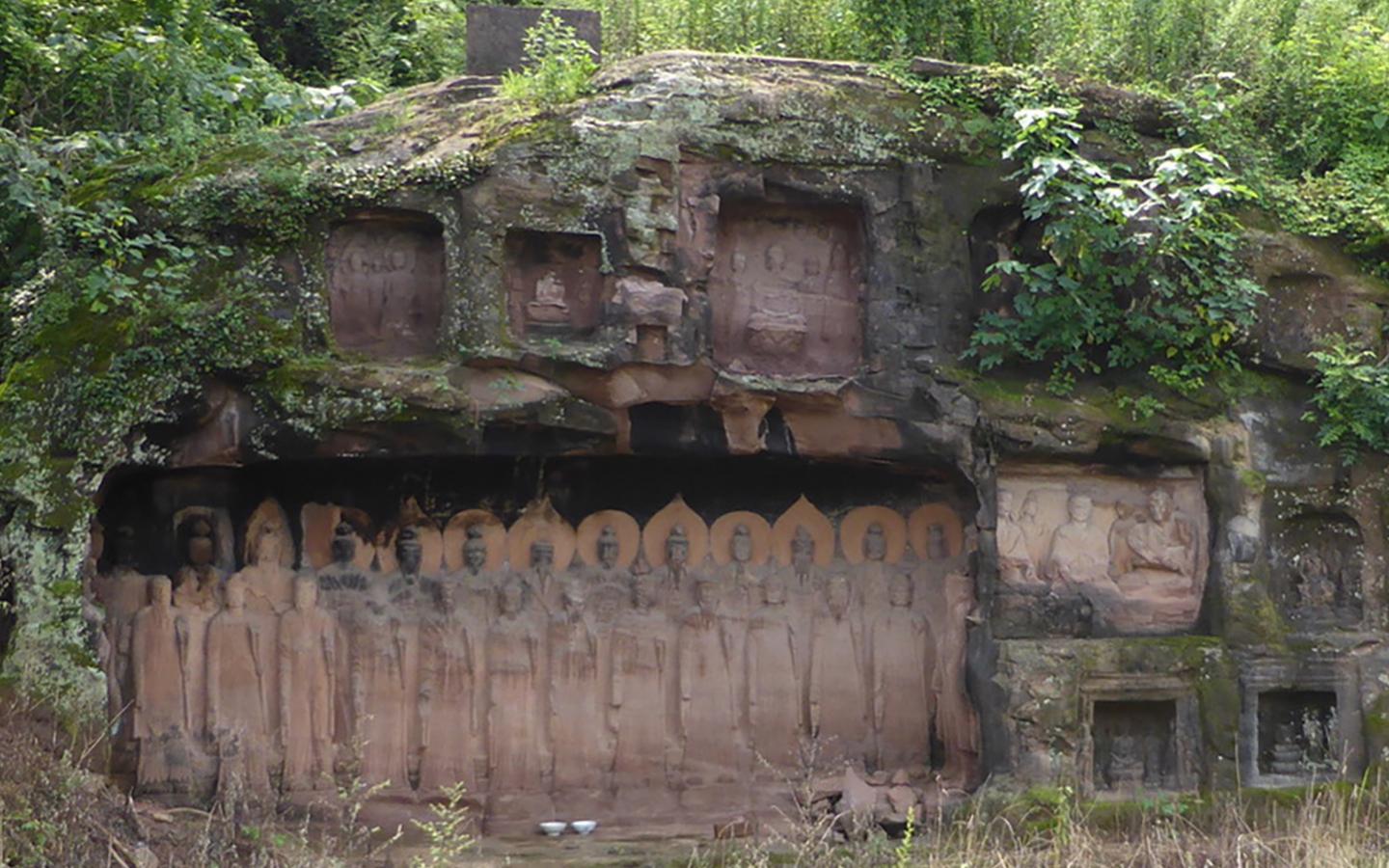At the Forefront of Daoism Studies
With major grant support, Dartmouth is leading an international effort to expand research into one of China’s ancient religions

The Henry Luce Foundation has awarded a $350,000 grant to a multi-university project led by Dartmouth’s Gil Raz, associate professor of religion, to apply modern methodologies and tools to the study of Daoism, one of the world’s oldest religions.
Daoism has been a central aspect of Chinese culture for more than 2,500 years, and it remains a vibrant religion in China.
The four-year project funded by the Luce Foundation will focus on Daoist objects from the fifth to 16th centuries, such as statues, stone inscriptions, and cave shrines, and will result in a much more robust understanding of the archaeological and epigraphic materials related to Daoism—ultimately enhancing the world’s understanding of Chinese culture, past and present.
In line with the goals of The Call to Lead campaign, the project will advance Dartmouth’s leadership in a scholarly field and strengthen the College’s distinctive, demanding model of education, which requires classroom teachers to also be active researchers.
Raz, who has worked and studied with Daoist priests in China and Taiwan for many years, is directing this project. He is joined by four scholars, three from China and one from the University of Florida.
Studying Material Culture Deepens Understanding of Daoism
During the past few decades, religious studies scholars around the world have expanded their research beyond texts to include material culture, ranging from statues and gravestones to robes and incense burners.
While the study of material culture has increasingly become an important component of understanding most major religions, this shift in methodologies isn’t yet widespread in the study of Daoism, a religion where rituals, practices, and ideas developed locally, rather than through a central hierarchy.
“There’s a long history in China of studying inscriptions for their calligraphy but not so much for their content,” says Raz. “Statues have generally been studied from an art historical perspective. And because the volume of Daoism material is smaller than Buddhist material, it has been completely overshadowed by the study of Buddhism.”
Bringing Dartmouth's Interdisciplinary Research Methods to China
Also contributing to the lack of a rich, multidimensional understanding of Daoism is the structure of Chinese universities, where individual fields of study tend to be insular and interdisciplinary research is rare, he added. “In China, if you do archaeology you do not do religion, and vice versa.”
In contrast, Raz says he hopes to involve colleagues from multiple disciplines, such as art history and classics.
In addition, he already has a Dartmouth undergraduate working with him on one of the project’s databases, and he hopes to involve more undergraduates in the coming years. This may include hands-on fieldwork in China, such as photographing, rubbing, and cataloguing inscriptions.
The project has four principal goals:
- Develop an international, interdisciplinary network of scholars to advance the study and understanding of Daoism;
- Collate, categorize, and map the archaeological and epigraphic materials—at multiple sites across China—related to Daoism;
- Develop and share methods of analyzing Daoist materials through site visits, workshops, and conferences, to be held in China and Hanover; and
- Share the project’s findings widely through journals, books, and other outreach.
“Archeology in China is very active,” says Raz. “There are daily reports of findings. Not all of them are relevant to this project, of course, but there are regular reports of incredible finds. People are rewriting the history of China.”